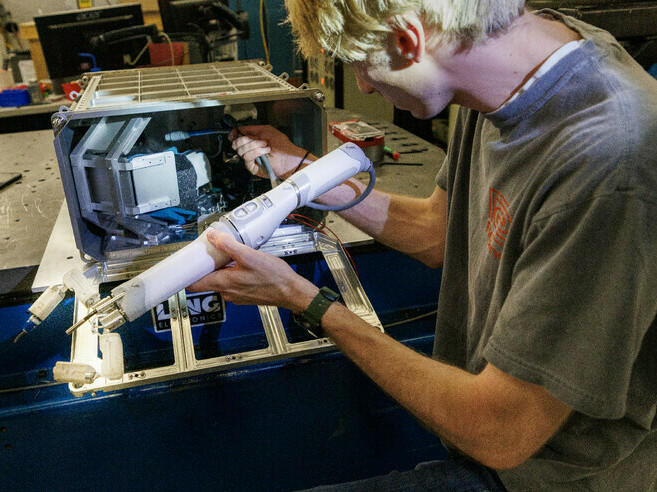Section Branding
Header Content
A tiny robot on the space station will simulate remote-controlled surgery up there
Primary Content
The robot is small in size but its aspirations are out of this world — literally.
MIRA, which stands for miniaturized in vivo robotic assistant, recently became the first surgical robot at the International Space Station.
The tiny robot, which weighs about 2 pounds, arrived at the space station on Feb. 1. Over the next few weeks, the robotic assistant will practice operating in zero gravity.
Developers plan to use MIRA to conduct a surgical simulation via remote-controlled technology, with a surgeon directing its movements 250 miles away from Nebraska.
"The tasks mimic surgical tissue with tension that allows a dissection to be performed," a University of Nebraska release explained. The robot "will use its left arm to grasp, and its right arm to cut, much like a human surgeon in a hospital operating room."
The robot was developed by Virtual Incision Corporation, based in Lincoln, Neb. It was also made possible through a partnership between NASA and the University of Nebraska.
The space mission can potentially help pave the way for medicine in long-distance space travel, but the inventors of MIRA hope their version of robotic-assisted surgery (RAS) will make the greatest difference for health care on Earth, particularly in areas that lack access to a local surgeon.
"When we started this work at the University of Nebraska, we shared a collective vision that miniRAS could make robotic-assisted surgery available to any patient, any time, anywhere," said Shane Farritor, Virtual Incision's co-founder. "Exploring the use of miniRAS in extreme environments helps our teams understand how we can remove barriers for patients."
The goal is for MIRA to be controlled by a surgeon through a console. From there, the surgeon can direct the robot's camera and instruments inside a patient's body. MIRA's inventors say it could be game changing in rural areas and in military battlefields.
The real-world application explains MIRA's size. Virtual Incision said RAS technology tend to be big and clunky, so the company wanted to design a device that would be easy to transport, store and set up.
Farritor and his colleagues have been developing MIRA for nearly two decades. MIRA is scheduled to return to Earth in the spring.

